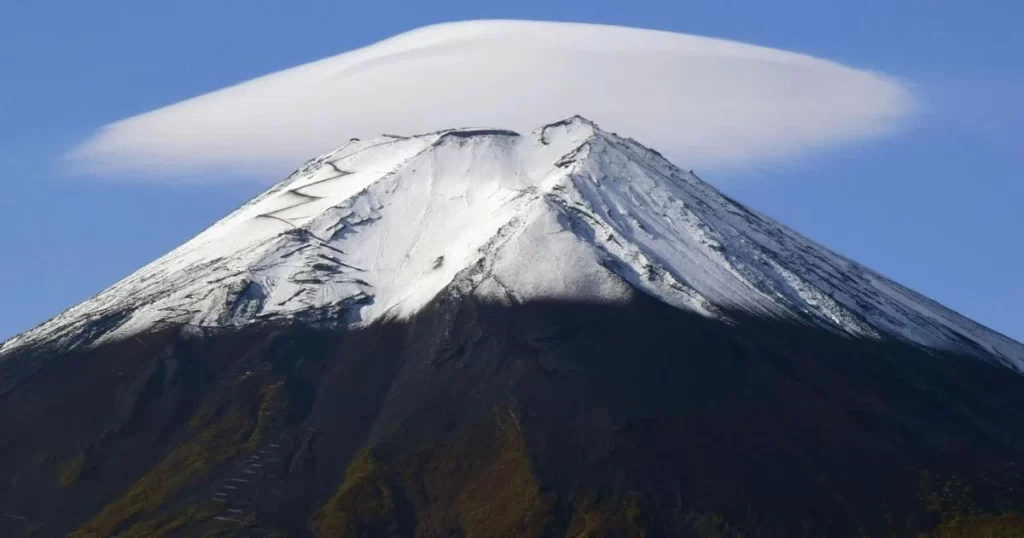News
Mount Fuji introducing visitor cap and entry fee to target overcrowding issues
Mount Fuji, an emblem of Japan’s cultural and natural heritage, stands tall as a UNESCO World Heritage site, drawing millions of visitors each year. However, the surge in popularity has brought with it a host of challenges, prompting the Yamanashi prefectural government to enact transformative measures aimed at preserving the sanctity of this iconic mountain. In a move to address concerns over overcrowding, environmental degradation, and safety, Mount Fuji is set to implement a series of regulations, including the introduction of an entry fee. Let’s find out with nowglas.

The allure of Mount Fuji has been both a blessing and a curse. The mountain, with its breathtaking views and cultural significance, has witnessed an unprecedented rise in foot traffic, leading to congestion, littering, and inappropriate hiking practices. To combat these challenges, the Yamanashi prefectural government, responsible for overseeing Mount Fuji, has taken a decisive step by voting to impose a 2,000 yen ($13) entry fee for climbers. This strategic move not only aims to regulate the number of visitors but also serves as a financial mechanism to support conservation efforts and ensure the sustainable management of the site.
Governor Koutaro Nagasaki emphasized the importance of implementing comprehensive safety measures and fostering a sense of responsibility among climbers. “By strongly promoting comprehensive safety measures for climbing Mount Fuji, we will ensure that Mount Fuji, a treasure of the world, is passed on to future generations,” stated Governor Nagasaki. The initiative goes beyond crowd control; it seeks to revive traditional mountain climbing practices from the foot of Mount Fuji and integrate the Fuji-ko and Oshi cultures, deeply rooted in the mountain’s worship.

Fuji-ko, a religion specific to Mount Fuji, plays a significant role in shaping the cultural values associated with the mountain. The Yamanashi prefectural government’s multifaceted approach includes not only the introduction of an entry fee but also a daily limit of 4,000 climbers. This regulatory measure aims to strike a balance between allowing visitors to experience the splendor of Mount Fuji and preserving the environment and cultural significance of the site.
To enhance safety and etiquette on the mountain, the government plans to deploy new guides who will actively manage the trails. These guides will educate climbers on proper conduct, addressing issues such as sleeping beside the trail, starting fires, or wearing inappropriate clothing. While the term “overtourism” may not be explicitly used, the measures suggest a proactive stance in managing the impact of an increasing number of visitors on the 3,776-meter (12,388-foot) mountain.
In recent years, Mount Fuji has grappled with the challenges associated with overtourism. Data from the prefectural authorities reveals a significant increase in the number of visitors, with five million people hiking Mount Fuji in 2019, compared to three million in 2012. The consequences of overtourism, including waste accumulation, rising CO2 emissions, and irresponsible hiking practices, have become pressing concerns for the preservation of this natural wonder.
Embarking on a Journey Through Time and Nature: Settle to Carlisle, Europe’s Most Scenic Train Route
Masatake Izumi, a Yamanashi prefectural government official, acknowledged the urgency of addressing overtourism-related issues. In a statement to Travel last year, Izumi identified overtourism as the “biggest problem facing Mount Fuji.” The decision to introduce an entry fee aligns with the sentiments of Tomoyo Takahashi, a volunteer who previously advocated for a mandatory fee to ensure that visitors genuinely appreciate Mount Fuji’s heritage. The fee is seen not only as a financial contribution but also as a means of filtering visitors, allowing those who value the mountain’s heritage to make the ascent.

The global tourism landscape has witnessed a surge in overtourism concerns, and Japan is no exception. In Kyoto’s historic Gion quarter, concerns have been raised about the “geisha paparazzi,” tourists who photograph and sometimes harass geisha. Discussions around fines and tickets as potential deterrents highlight the challenges faced by communities dealing with an influx of visitors.
Similarly, Hatsukaichi in Hiroshima prefecture implemented a 100 yen (33 cents) “tourist tax” per visitor to address the impact of tourism on the famous “floating shrine” torii gate. This innovative approach contributes to the maintenance of the site and its infrastructure, emphasizing the need for sustainable practices in managing tourist destinations.
As Mount Fuji embarks on a new era of regulated access and environmental stewardship, these measures underscore the global need for responsible and sustainable tourism practices. Balancing the allure of iconic destinations with the imperative to preserve their cultural and natural integrity remains a crucial challenge for nations grappling with the complexities of the modern travel landscape.
In conclusion, Mount Fuji’s decision to introduce an entry fee represents a strategic and comprehensive approach to tackle the challenges of overcrowding and overtourism. The move aligns with a broader global conversation on sustainable tourism, emphasizing the importance of preserving natural wonders and cultural heritage for future generations. The success of these measures will not only be reflected in the conservation of Mount Fuji but will also serve as a model for other destinations facing similar challenges in the evolving landscape of international tourism.
See more: Great Barrier Reef Faces Another Bleaching Crisis as Climate Woes Persist
